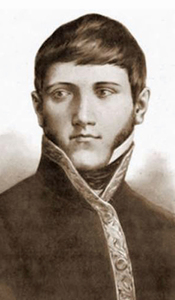That night we came to an agreement with Capitán Ker that on the morning of the 30th he would take Segundo Piloto Delgado and myself to Salomague Point, from where we planned to take additional bearings to fix the NE extremity of the island of that name. Meanwhile he would make his way to the anchorage off that island, where we intended to measure another base in order to fix the position of the outer shoal, over which a parao was to station itself with a flag flying from its mainmast. I asked him to send us the launch as soon as we hoisted a flag, which we did at eight o’clock, and soon after that we went over to the island, where we measured a base of 928 English feet on its eastern beach. After taking the bearings we made an observation for longitude of 0°34′31″[west of Manila] and at noon our latitude was 17°45′15″.
At two o’clock in the afternoon, a fresh breeze having set in from west and WNW, we set sail, clearing Salomague Island, and then setting a course parallel to the coast at a distance of two to three leagues. During the night the wind dropped completely until the early morning of 1 May, when a fresh breeze set in from ENE. We began our survey, measuring bases and taking hour angles on the meridians of prominent features. At noon, when on the parallel of Port Currimoa, we sighted the higher ground of Cape Bojeador. Our position was then latitude 18°1′59″ and longitude 0°38′37″[west of Manila], while Vigan Inlet bore S21°E, the western point of Currimao S89°E, Mount Llarra N59°E and the higher ground of Cape Bojeador N38°E.
The information that we had received about the schooner Santa Isabel before our departure from Manila led us to expect that we would probably complete our work on board her, but on leaving the harbours of Solot and Salomague we found that this was not to be the case, when we noticed that the pumps were too frequently in use. Surprised by this, we made inquiries of the capitán, who told us that the schooner would soon need to be careened for a complete repair, as all the seams were sprung. With this news we realized that we could only make use of her with the wind astern and, as the season was now so advanced, that we could not lose an instant in carrying out our mission, I assured him that the voyage would be over upon our arrival at Aparri.
From midday the wind began veering to the fourth quadrant, and at half past three we were obliged to tack to seaward, on which we measured bases, repeating the bearings taken previously. We finished at five o’clock, when we tacked back towards the land with a northerly breeze, intending to approach the cape so as to allow for a course overnight which would place us in a favourable position at dawn, but our efforts were all in vain. Our intentions were thwarted by the weakness and variability of the wind, forcing us to abandon the measurement of bases and observe only latitudes and longitudes at suitable positions.
Although the unsettled weather was an inconvenience for us, our anxiety was allayed by our knowledge of the exact positions of Cape Bojeador, Bangui Point, the most NE point of Luzon Island, and some of the Babuyan Islands.
